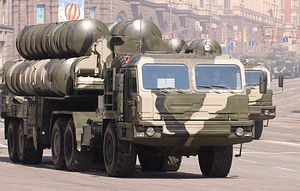The United States and India continue to discuss New Delhi’s intended procurement of five regiments of Russian-made S-400 Triumf air defense systems (NATO reporting name: SA-21 Growler) and Washington’s threat to impose economic sanctions on India should it proceed with the purchase of cutting-edge Russian military hardware.
So far, they have not reached an agreement, according to a senior U.S. official. “We continue to have conversations with the Indian leadership on ways that we are working to hold Russia accountable for its behavior,” Principal Deputy Assistant Secretary of State for South and Central Asia Alice Well said during a conference call with reporters on September 10.
As a consequence for what the U.S. government considers a state-sponsored influence operation to manipulate and detrimentally influence the 2016 presidential elections in the United States, the U.S. Congress passed the so-called Countering America’s Adversaries Through Sanctions Act (CAATSA), which came into effect in January 2018.
The U.S. law decrees the imposition of mandatory economic sanctions on countries importing Russian military hardware. However, this year’s U.S. National Defense Authorization Act (NDAA) grants the Trump administration authority to waive mandatory sanctions under CAATSA in certain circumstances pertaining to Russian legacy systems that costs less than $15 million.
The sanctions “are designed to impact Russia,” Well said in response to whether India could be targeted under CAATSA. “We are working through the implications of CAATSA and the significance that we attach to CAATSA,” she added. Despite, the S-400 clearly not being a legacy weapons platform — it is considered to be the most advanced long-range interceptor-based air defense system in Russia’s current inventory — Well notes that President Donald Trump has the authority to forgo sanctions.
“The authority that was granted by Congress allows the president to make a determination. Those determinations will be made on an individual basis,” she said without elaborating on any details.
The contract value for the five S-400 regiments is estimated at around $5.5 billion. Moscow has been New Delhi’s largest defense supplier since the 1960s, accounting for 68 percent of India’s arms imports from 2012 to 2016, according to the Stockholm International Peace Research Institute.
“I think there’s a great understanding of the legacy of India’s military, defense cooperation relationship with Russia. The focus and the conversations are really on the kinds of a defense acquisition that would shape India’s strategic relations over the next generation and what impact that has on interoperability and the ability to continue to deepen its partnership with [the] U.S. and others,” Well said.
A contract for the missile defense systems is expected be signed during a summit meeting between Indian Prime Minister Narendra Modi and Russian President Vladimir Putin scheduled for October 5. A final decision by the White House over the S-400 and the imposition or waiving of sanctions can be expected before then.
































